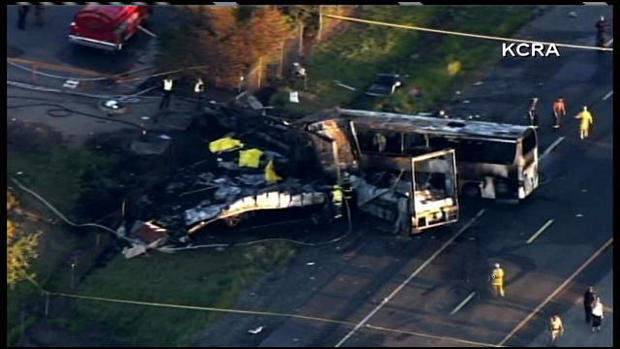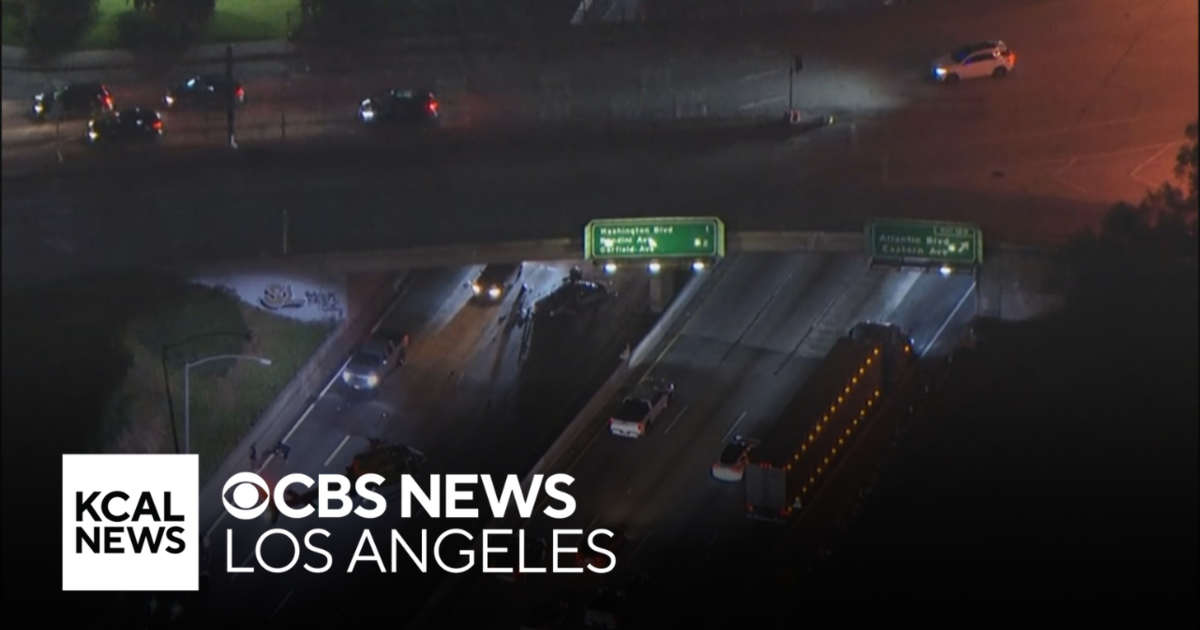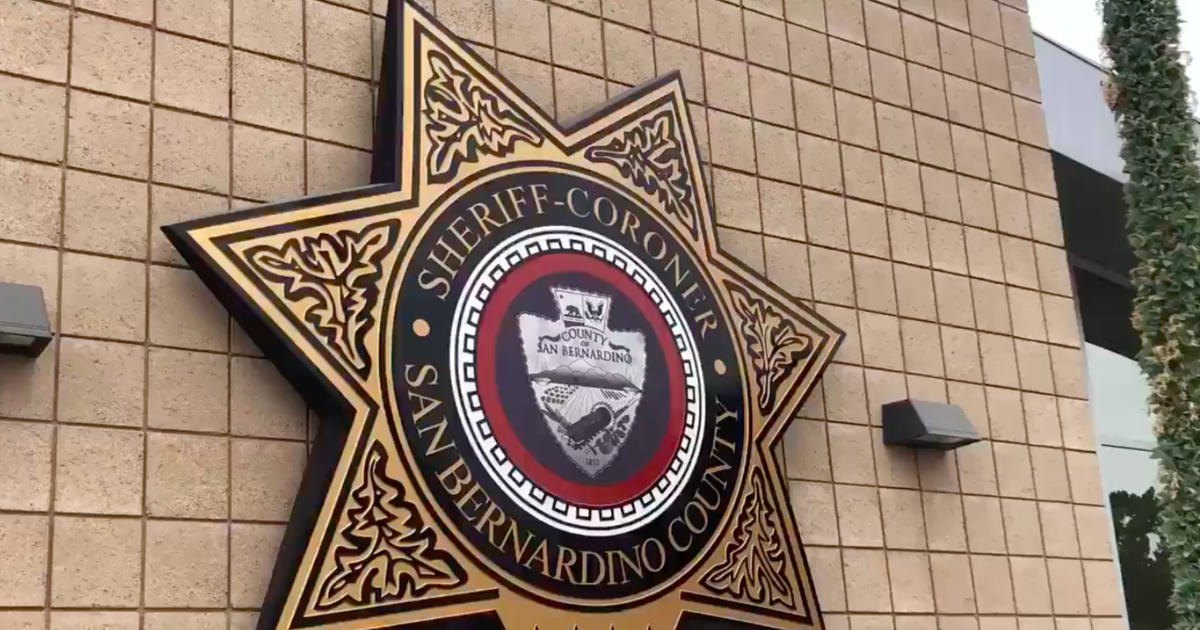NTSB Examines Claim Truck Was On Fire Before Orland Crash
ORLAND, Calif. (CBSLA.com/AP) — Federal investigators are looking into a driver's claim that a FedEx tractor-trailer was already on fire when it careened out-of-control across a freeway median and slammed into a bus taking high school students on a college tour, killed 10 people and injuring dozens more.
The investigators are looking for more witnesses who could corroborate the driver's claim, and planned to examine crash scene evidence for clues of a fire before the vehicles exploded into towering flames on the 5 Freeway near Orland, National Transportation Safety Board member Mark Rosekind said during a news conference Saturday evening.
"Our survival factors group has determined that some individuals were ejected from the bus. Clearly one of the issues we're going to be looking at is whether or not seat belts would have made a difference in these folks being ejected," Rosekind said.
The bus, a 2014 Setra, had seat belts but it's unclear whether the students were wearing them. Some victims were thrown onto the roadway.
The NTSB found no skid marks from the lanes where the FedEx truck initially turned into the median.
"There's no indication of tire marks from breaking in the median or in the northbound lanes," Rosekind said.
Investigators did not say whether that means the truck driver was at fault, but the finding does play a factor in determining why the driver was going the wrong way.
The agency had been on the scene for less than 24 hours at the time of the news conference, and an exact analysis was not yet unavailable.
Rosekind's remarks followed a new twist added to the investigation of the crash, when a couple said the big rig already was on fire when it careened across the median and sideswiped their car before slamming into the bus.
Initial reports by police indicated the truck swerved to avoid a sedan that was traveling in the same direction, then went across the median. There was no mention of the truck being on fire.
But Joe and Bonnie Duran, the Seattle-area couple who were in the car, said, like the bus, they were northbound on Interstate 5 on Thursday afternoon. Bonnie Duran, who was driving, said flames were coming from the lower rear of the truck cab.
"I just looked to the left, and there it was coming through right at me at an angle. I can tell I wasn't going to outrun him so I just kind of turned to the right and he hit me," she said. "It was in flames as it came through the median. ... It wasn't like the whole thing was engulfed. It was coming up wrapping around him."
Officer Lacey Heitman, a spokeswoman for California Highway Patrol, said she could not confirm if the truck was on fire before the collision until all evidence was gathered. NTSB spokesman Keith Holloway said the agency continues to investigate the condition of the truck before the collision, including if it was on fire. FedEx spokeswoman Bonnie Harrison wouldn't comment on the reports the truck was on fire.
When the tractor-trailer collided with the charter bus carrying high school students to a college campus tour in California's redwood county, the vehicles exploded into towering flames and billowing black smoke. Bodies recovered from the bus were charred beyond recognition.
Five students from the Los Angeles area, three chaperones and the truck and bus drivers died in the crash about 100 miles north of Sacramento. Dozens were injured, and several remained hospitalized Saturday, including at least one in critical condition.
As part of what's expected to be a lengthy and broad investigation, federal transportation authorities are examining whether fire-suppression systems they previously recommended to improve motor coach safety could have allowed more of the 48 bus occupants to escape.
In a briefing at the start of the investigation, Rosekind said his agency will not only look into the cause of the crash, but what regulators can do to stop any similar ones from happening in the future. Fire safety is one of six areas the NTSB plans to investigate, partly because it has been longstanding concern of the agency.
After a 2005 bus fire killed 23 nursing home residents escaping Hurricane Rita in Texas, the NTSB called for safety standards that could make buses less vulnerable to fire, including improved protection of fuel tanks. More recently, the NTSB says buses must have sophisticated suppression systems to control fires, much as high-rise buildings have sprinkler systems.
"Fire suppression holds the greatest potential for saving lives, reducing costs and minimizing damage," according to a recent NTSB list of its safety priorities for all modes of transportation. Existing fire standards dating to the 1970s apply to small fire sources such as lit cigarettes, but they do not apply to large fires that can start outside the bus.
The NTSB, which investigates accidents and their causes, has no authority to require safety changes it recommends.
But a bill passed by Congress in June 2012 directed the Department of Transportation to conduct research and tests on ways to prevent fires or mitigate the effects, among other safety issues. That included evacuating passengers, as well automatic fire suppression, smoke suppression and improved fire extinguishers. Representatives of the bus industry told Congress that manufacturers were increasingly and voluntarily adding such features.
The law suggests the department issue new standards in those areas within three years if the secretary of transportation decides they are "reasonable, practicable and appropriate."
So far, the government has not proposed any new standards related to passenger evacuation in event of a fire or other fire-related issues, according to Advocates for Highway and Auto Safety, which lobbied Congress for tougher motor-coach safety standards.
"The legislation includes many mandates to the Transportation Department on many aspects of safety, some of them easy, others not so easy," said Jacqueline Gillan, president of the safety advocacy group. "Nonetheless, they all need to be done, and there have been no regulations even on the easy ones."
The Federal Motor Carrier Safety Administration, which is part of the Transportation Department, recently initiated a two-year contract to develop and evaluate test procedures to assess fire detection, suppression and flammability of exterior materials for motor coaches, the safety advocacy group said. The research project, headed by the Southwest Research Institute, is to focus on engine and wheel-well fires.
A 2012 study commissioned by the agency estimated that 160 bus fires occurred that year from such non-collision related causes and 95 percent did not result in injury or death.
The 44 Southern California high school students on the bus in Thursday's crash, many hoping to become the first in their families to attend college, were on a free trip arranged by Humboldt State University.
The victims included a recently engaged couple from Los Angeles and an admissions counselor from Rancho Cucamonga chaperoning the trip. Among the students was an identical twin from Riverside whose sister was on another bus that arrived safely at Humboldt.
Silverado Stages, the San Luis Obispo, Calif.-based company that owns the charter bus involved in the crash, has a strong safety record, and it has said it is fully cooperating with the investigation. It is unclear what sort of fire-safety equipment the bus in Thursday's crash had, and the company couldn't be reached for comment Saturday.
As part of its investigation, the NTSB said it is investigating whether the FedEx driver might have fallen asleep or suffered a health problem and whether there were mechanical issues with the truck. They plan to run toxicology tests on the drivers of the truck and the tour bus.
The agency also is evaluating whether there should have been a barrier on the median to help prevent head-on collisions. Barriers are required when medians are less than 50 feet wide; this one was 60.
The truck's module, which is analogous to a plane's black box, was destroyed in the crash, so investigators will have to look at the transmission and other electronics to piece together what happened.
RELATED STORIES:
CHP: 5 Students Among 10 Dead In Orland Bus Crash
FedEx Cooperating With Authorities In Wake Of Fatal Tour Bus, Big Rig Crash
Twin Sister Among 10 Killed In Orland Bus Crash
Family Shares Happy Memories Of Engaged Couple Killed In Orland Crash
Humboldt State Mourns Death Of Admissions Counselor Killed In Orland Bus Crash
(TM and © Copyright 2014 CBS Local Media, a division of CBS Radio Inc. and its relevant subsidiaries. CBS RADIO and EYE Logo TM and Copyright 2013 CBS Broadcasting Inc. Used under license. All Rights Reserved. This material may not be published, broadcast, rewritten, or redistributed. The Associated Press contributed to this report.)





